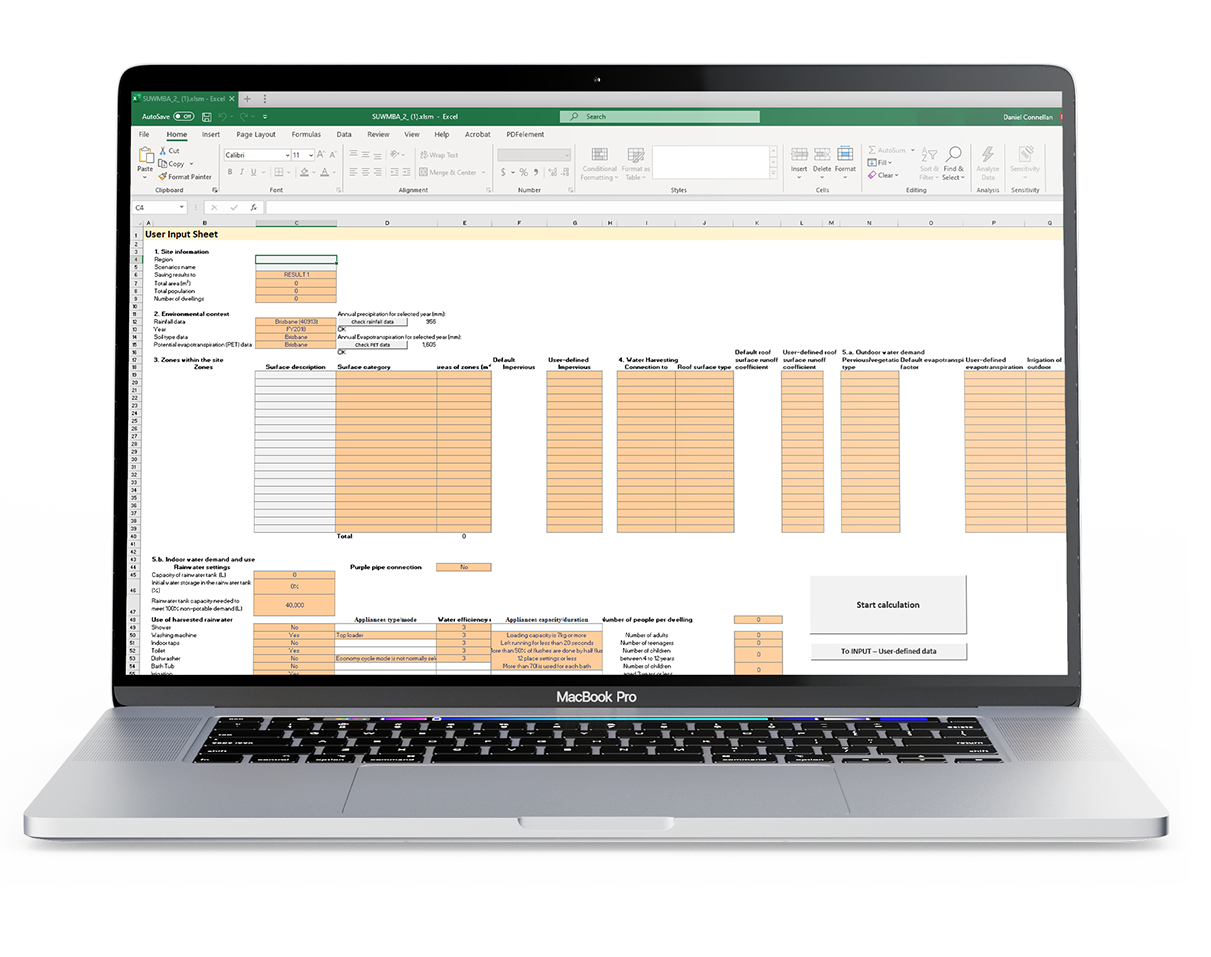From October 2025, we will not make any more improvements to the Site-scale Urban Water Mass Balance Tool. Users can continue to use the existing version, however there will be no ongoing support and development. We are exploring other development opportunities.
You can find out more here: Access arrangements for Water Sensitive Cities (WSC) Tools
Find out how to measure the water flows of an urban
The Site-scale Urban Water Mass Balance Assessment (SUWMBA) Tool measures the water flows into, through and out of an urban area. The tool generates a comprehensive account of all water flows in both the natural and human-made water cycles (rainfall, evapotranspiration, stormwater runoff, imported water, decentralised water, wastewater, etc.)
You can use this Excel-based tool to consider how water performance is affected by:
- built form design – e.g. building size and the perviousness of land covers
- water servicing features – e.g. rainwater tanks, wastewater recycling
- environmental conditions – e.g. rainfall and soil type.
You can use the SUWMBA Tool with the Infill Performance Evaluation Framework to better define your water sensitive project.

Interested in applying the SUWMBA Tool?
Or email us admin@crcwsc.org.au
Where to find more information
You’ll find more information about measuring water flows on the following pages:
Useful resources
The SUWMBA Tool is simple to use
The tool performs four main steps:
- Defines the urban entity to be assessed
- Inputs parameters needed to estimate urban water flows
- Compiles the urban water mass balance
- Generates water sensitive performance indicators.
Practitioners input to the tool:
- site information (e.g. population, number of dwellings)
- environmental context (e.g. location, timeframe of analysis)
- zones within the area (e.g. land cover areas and their characteristics)
- availability of alternative water sources for particular uses (rainwater harvesting, purple pipe etc.)
- water demand (indoor and outdoor water characteristics etc.)
- hydrological model settings.
The outputs are an annual water mass balance for the assessed urban entity, and a set of 25 water sensitive performance indicators (e.g. water supply self-sufficiency, stormwater runoff coefficient, stormwater runoff naturalness ratio).
Supporting materials are available to help you
The user manual provides a step-by-step process for entering the required information into the tool.
